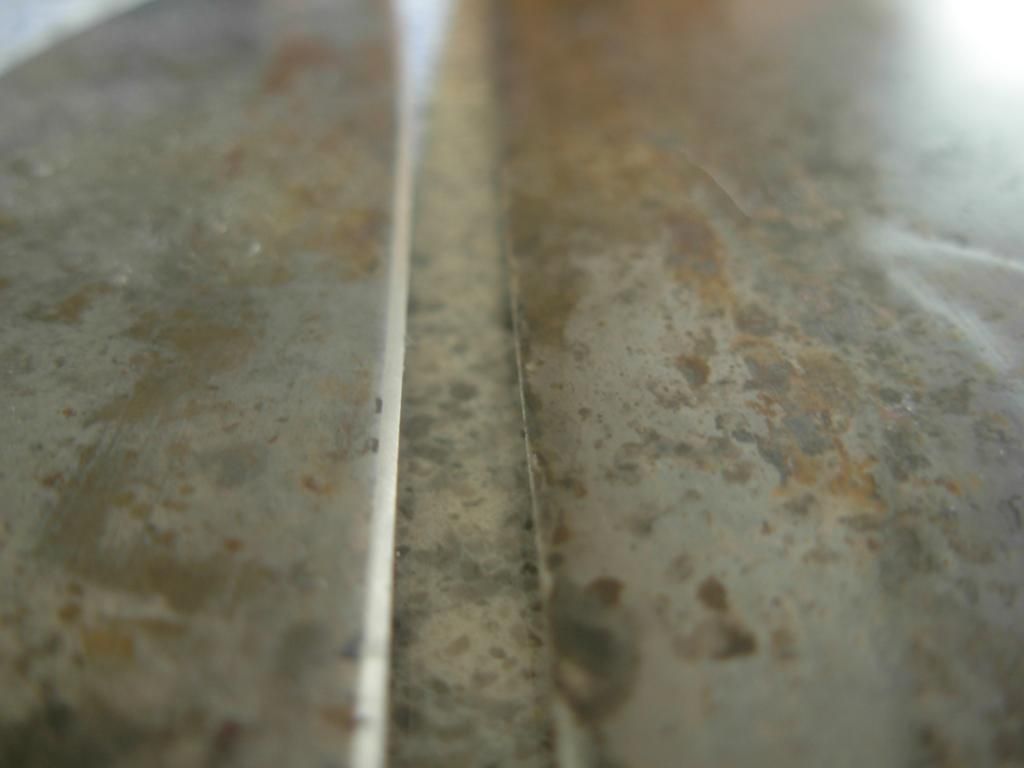Shawn Hatcher
Well-Known Member
i still do lots of mistakes doing simple flat grinding even!
Hmmm. I don't think I've ever used "simple" and "flat grinding" in the same sentence!
i still do lots of mistakes doing simple flat grinding even!
Hmmm. I don't think I've ever used "simple" and "flat grinding" in the same sentence!
Ed Fowler:231970 said:Shokr: The most essential aspect is a fresh belt and a light touch. My initial grinding is done on a wheel, then I go to a slack belt and carefully blend from edge to spine. My first grinds are done on a 36 grit Aluminum Oxide belt, immediately followed by a 220 grit belt to remove all scratches.
It takes practice, if you were in my shop I could have you doing it well in a day. I learned by practicing, and have learned how to coach new comers how to do it after teaching many makers and learning how to teach from them. I wrote it up in Blade a few issues ago and some liked the explanation. It is not as easy to do as the flat grind, but in my opinion it is well worth it when it comes to performance. The convex grind provides the strongest blades and if done right are a joy to use.

Ed Fowler- GREAT to see you posting here at Knifedogs !!!!
I'll first say that convex edges are one of the easier techniques to master so have no fear of that. Of course there is a learning curve but it'll be short and relatively painless
There are some things to consider that can shorten your curve though.
I think it's important to note that the covex has geometry. It can be a fat convex or a thin convex or anywhere inbetween. It can be a true zero ground convex right to a sharp edge with no sharpening bevel whatsoever. It can be zero ground with a micro-bevel. And it can be super fat and thick at the edge still with a large sharpening bevel.
Deciding what geometry to use is another discussion entirely but I will suggest that there is NO substitute for testing your own knives thoroughly. Not destructive testing but using testing that lasts long enough to go through several re-sharpenings at minimum. This is going to tell you more about your methods than a gazillion of our typed words
Your own process will also have an effect on what makes sense to do. When I do my convex edge I don't want to risk adding any super deep scratches to my blade that'll cause me nightmarish blade finishing so I do it all on a 220 belt.
Again you'll have this down in no time at all.
I'll add one more thing. I have a Rotary Platen and love it for this purpose. However, there is nothing magical about it and I don't achieve an end result any different than what I got before I had it. What it does do is save me time especially in blending the top of the convex into the flat but a bit of effort hand sanding will do the same thing.
Take care,
Josh
Ed Fowler- GREAT to see you posting here at Knifedogs !!!!Without the free sharing of info from those of you with the years and the miles we'ld all still be flint knapping our blades so your contribution to the forum is greatly appreciated.
Josh, you're not making it simple... AT ALL lolI think it's important to note that the covex has geometry. It can be a fat convex or a thin convex or anywhere inbetween. It can be a true zero ground convex right to a sharp edge with no sharpening bevel whatsoever. It can be zero ground with a micro-bevel. And it can be super fat and thick at the edge still with a large sharpening bevel.
